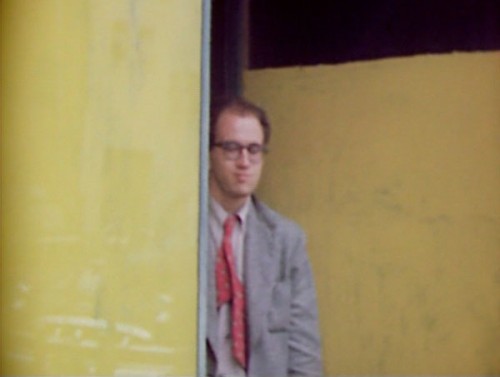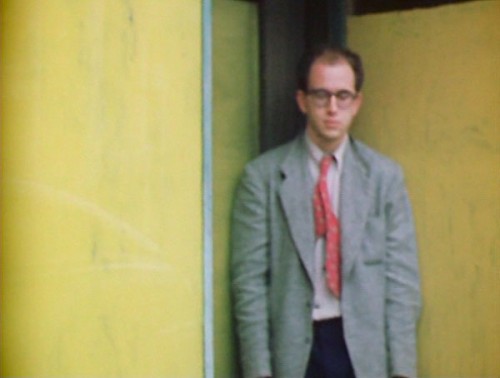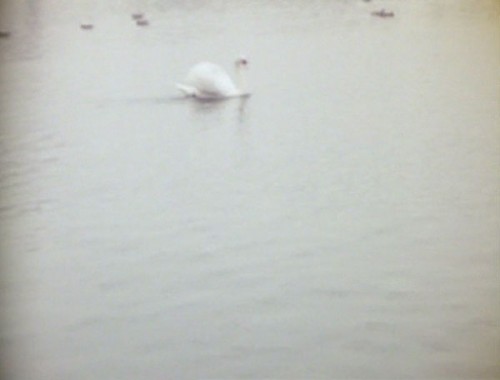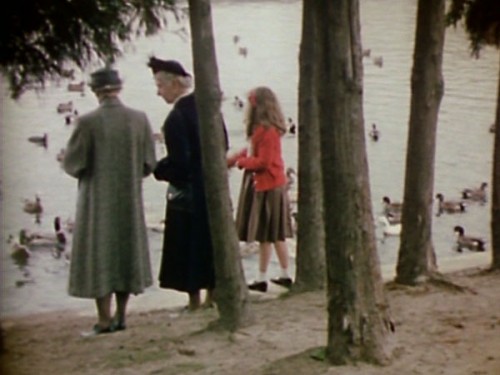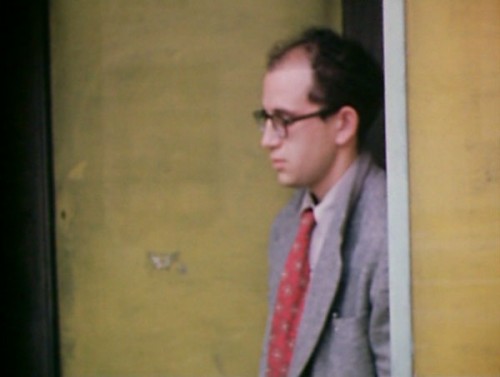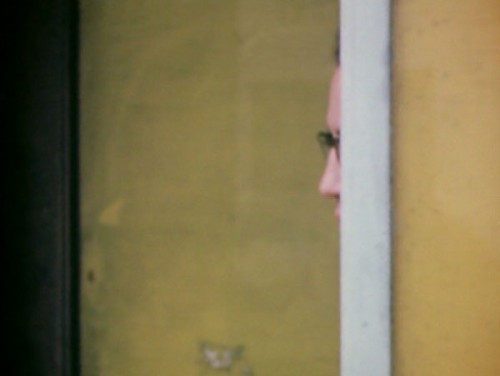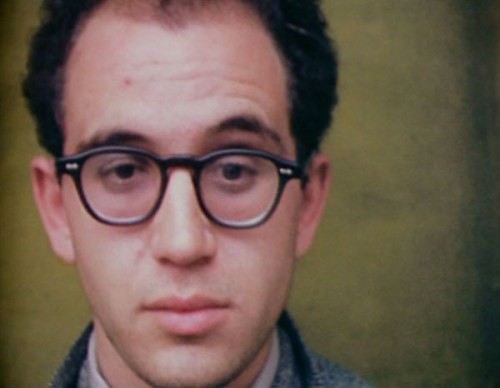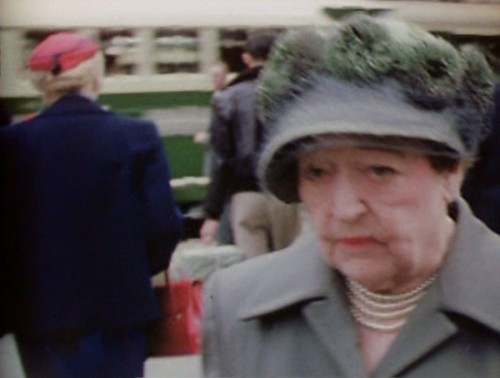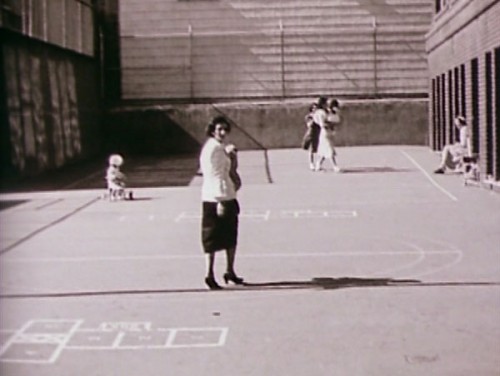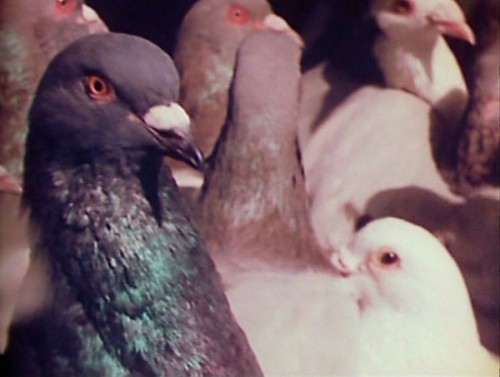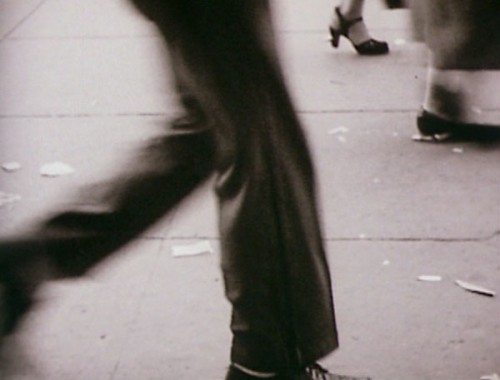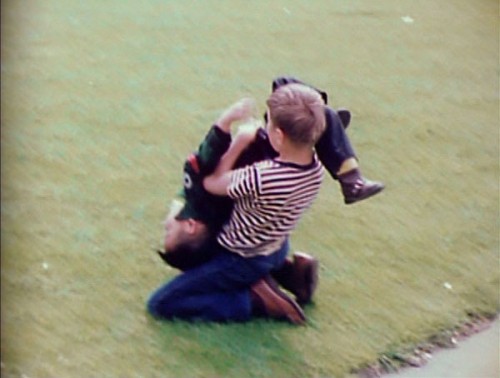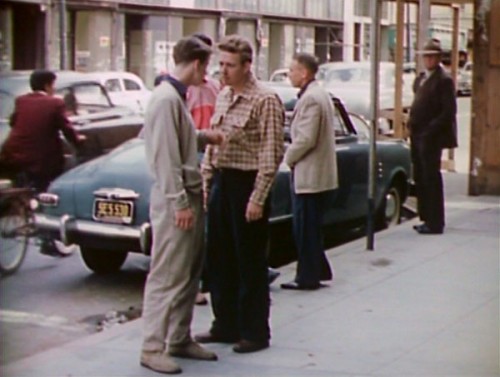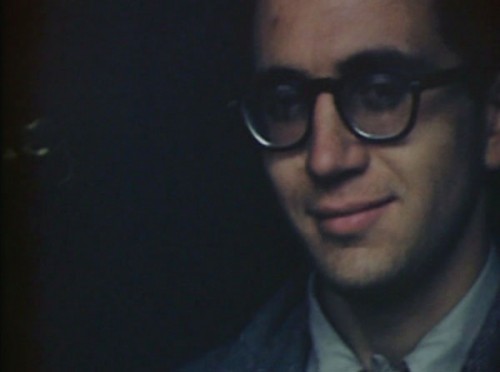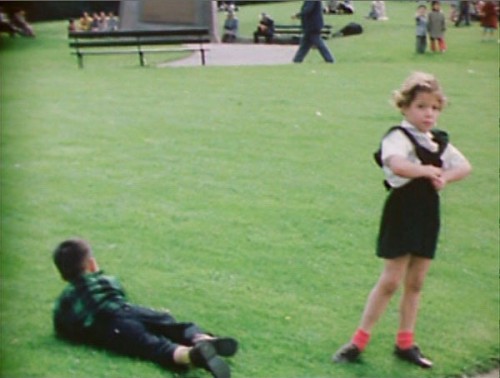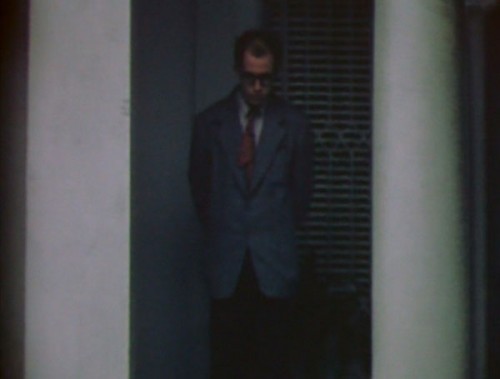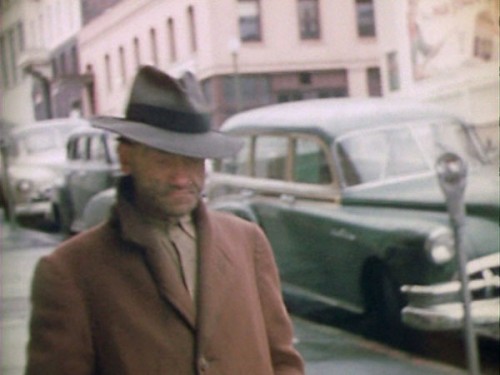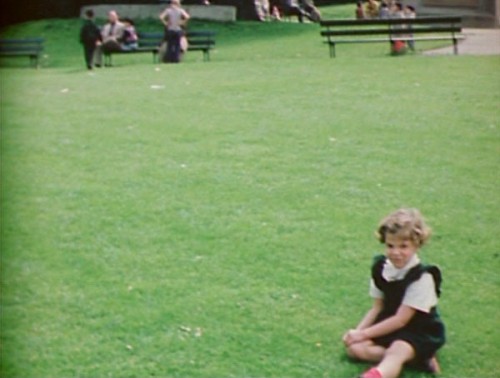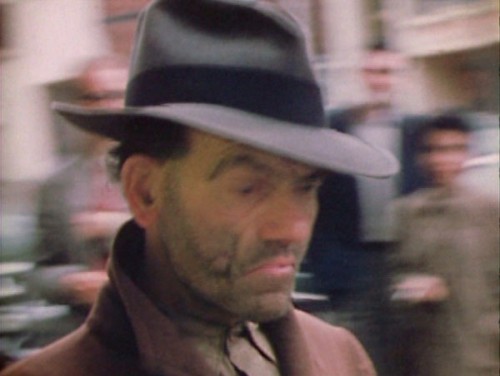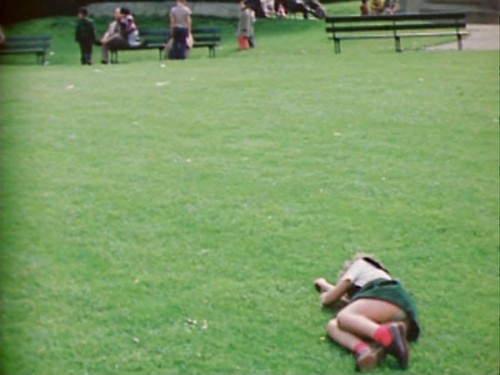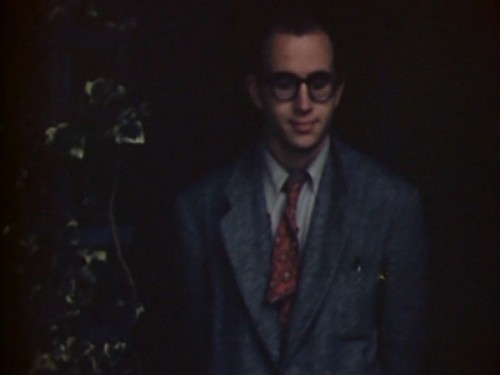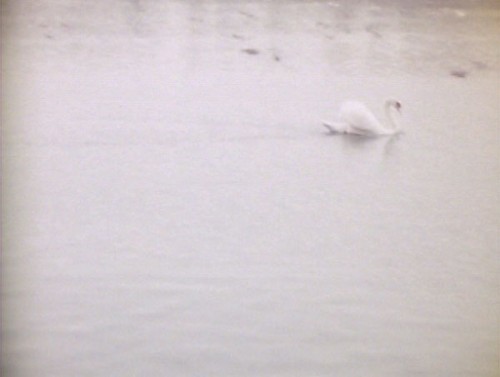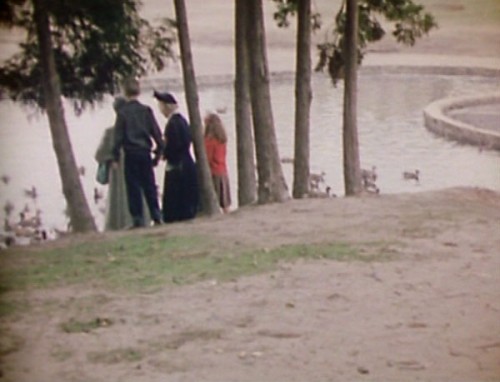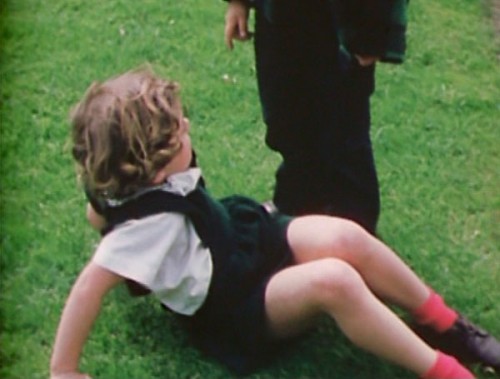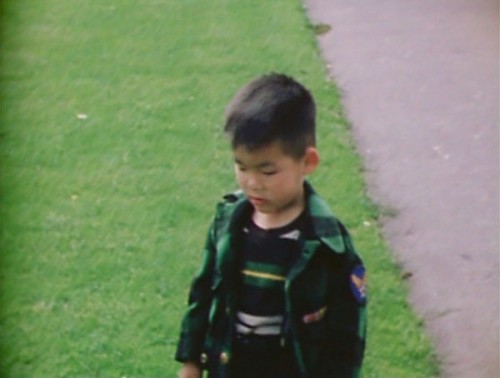In Search of Christopher Maclaine 5: The THE END Tour - A Work in Progress 4: CHARLES A
This is the fifth in a multipart series unofficially conjoined to the publication of Radical Light: Alternative Film & Video in the San Francisco Bay Area, 1945–2000, and the accompanying film series currently being presented by the Pacific Film Archive and San Francisco Cinematheque (in partnership with SFMOMA).
With my friend Brian Darr, proprietor of the great Bay Area cinephilia blog Hell on Frisco Bay, I’ve been scouting out the San Francisco locations used in Christopher Maclaine’s Masterpiece, THE END. What began as an attempt to identify and document what physically remains of the often mysterious places at which THE END was shot has evolved into a larger project to also analyze the film, and to identify all its many actors and extras, all of whom appear uncredited. To read the full version of these preliminary remarks, including info on how YOU can participate in this project, click here. For further information on Maclaine, check out the intro , which serves as this series’ hub. For the previous post of this Tour, click here.
NEW FEATURE: a Youtube of the CHARLES episode is viewable here.
NOTE: portions of Maclaine’s Voice-Over narration are transcribed in italicized sections. The images, for the most part, are stills documenting many (but by no means all) of THE END‘s shots. Those unfamiliar with this film will probably want to watch the video clip found above first, before making their way through the (hopefully enjoyable) notes and explication.
1) We now move to the second of THE END’s major characters, CHARLES, whose tale will undoubtedly be regarded as the darkest in Maclaine’s gallery of rogues. After showing us this “2,” Maclaine cuts briefly to black before the next shot, and introduces Charles’s unidentified musical theme, which will play for the duration of his episode. On the basis of a PBS travel show I’ve seen, this piece sounds to be Turkish flute music. Divorced from its original cultural context, it makes a major contribution to evoking the absurd, fatalistic, and bluesy tone of Charles’s reality.
2) Maclaine’s Voice-Over narrative won’t begin till picture 12, but his images start getting us up to speed immediately. Charles (identified as Darryl Solari by Wilder Bentley II) is first seen with his eyes closed and displaying a slight smirky grimace, which will prove a prototypical expression for this character. In this shot, as in many of those to follow, he faces the camera directly, a violation of all normal rules of narrative film grammar circa ’53 (and, for the most part, to this day). Charles’s pose and the framing of this image resemble those of a snapshot of a self-conscious child. Recent scientific research has shown that children displaying such expressions, indicating lack of confidence or a stable sense of self, are likely to have experienced significant psychological trauma.
3) Maclaine jump-cuts from the previous shot to this quite similar shot of Charles sans grimace, but with his eyes still closed. Perhaps he’s daydreaming and/or ruminating on the images/memories that fuel his self-mythology. While the jump cut has already been seen in THE END, it’s employed in the Charles episode with dizzying ferocity, and reveals itself an apt technique for rendering the fragmented world of this fractured character.
4) The first of Charles’s mindscreen images: a swan floating on what appears to be a lake. The swan is a pan-cultural symbol of beauty, grace, perfection, and purity.
5) The swan is presumably on its way to this red-sweatered little girl, who is feeding ducks and other fowl alongside what appear to be elderly female family members. Although unseen in this image, a somewhat older brother-type has been shown lurking in the background. (All members of this “family” are unidentified.)
6) Side view of a sad Charles. Cut to:
7) Charles hiding.
8 ) Why is this man so sad? Does he suffer from some major complex? Of what nature could it be? For Walter, we took a Jungian approach — perhaps Freud is more apropos to the case of Charles? (Of course, the concept of the “complex” was probably Jung’s own most important contribution to Freudian theory.)
9) We see a montage of more mindscreen imagery, the first of which is this unidentified lugubrious matron.
10) Another matronly type turns to face camera (is she looking at Charles?). Her (unidentified) schoolyard environment naturally evokes the issue of her relationship to children.
11) Maclaine wryly links the matrons of pictures 9 and 10 to this pigeon. Are these women somehow related to Charles? Perhaps they evoke his mother? This pigeon looks as if it could also be a progenitor of Charles, as evidenced by picture #8.
Charles was very upset. For reasons we know nothing about …
12) Maclaine’s narration of Charles’s story begins over several shots that appear to be from Charles’s POV of the lower bodies of passersby whom he observes while he lurks and broods in storefronts. Such matter is appropriate viewing material for a lurker and brooder. After tersely giving us an all-too-obvious rundown of Charles’s mental state, Maclaine, our omniscient narrator, absurdly asserts he’s in the dark regarding Charles’s motivations. We are shortly to see, however, that “we know nothing” because the products of Charles’s complex run so counter to the “laws of society” they can’t be openly discussed, perhaps even including by Charles himself, in his own inner dialogue.
… he had just murdered his landlady, and her seven-year-old daughter.
13) This revelatory line is actually delivered over a b&w shot of legs and feet, like the one in #12, right after we’ve seen the image above, which suggests childhood conflict (boys unidentified).
For hours he’d been standing around in doorways, thinking it over …
14) This image of young men (on an unidentified street, possibly somewhere in the Tenderloin) engaged in a friendly but bantering exchange chimes with Charles’s open-air but solitary inner-debate.
… and hearing in his despairing ears the thing his mother had said to him …
15) Charles’s smirks and giggles indicate a man whose character and, more likely, experience have led him to a realm outside conventional human understanding of the world and his responsibility to it.
… over and over again as a child:
16) A mindscreen image of an (unidentified) little girl looking at the camera in an engaged fashion. Charles can relate to children, or at least perhaps he thinks he can. After much research (especially by Brian), we’ve come to the conclusion this park (first seen in image #13) is probably Chinatown’s Portsmouth Square, which since 1953 has undergone a makeover or two.
“They’ll hang you yet, Charles.”
17) A bitter laugh-line which gets me every time. Maybe Charles’s mother thought this kind of thing character-building? As the Smiths have it: “Some girls’ mothers are bigger than other girls’ mothers.” Perhaps this is applicable to boys, as well?
18) Unidentified man on an unidentified street. In ’53 this fellow would have commonly been referred to as a “bum.”
UPDATE 12/15/10: Historical consultant John A. Martini has identified our “bum” as “heading south on Montgomery, just past Pacific. Pacific Street in this area was (part of) the old Barbary Coast, which by the 1950s had devolved into a seedy entertainment area called the International Settlement.” Thanks, Mr. Martini!
19) Another mindscreen image (from the “Bum’s” POV?) of the unidentified little girl from #16.
So the early hours of the day passed …
20) Maclaine cuts back to the “Bum.” Is this man a mindscreen self-portrait by Charles? Himself as, literally, a “dirty old man”?
… and he was no nearer to an understanding …
21) Maclaine cuts back to the “Bum’s” POV, which should likely be understood as the POV of Charles’s mindscreen “self-portrait as dirty old man.” With savage irony, just as Maclaine is discussing Charles’s lack of self-understanding via the Voice-Over narration, the image on screen gives us, the audience, all too clear an understanding of his situation.
… of this thing that had happened to him, whatever it might have been that made him …
22) Charles continues to lurk and brood. His whole life might be described as “this thing that had happened to him.”
… destroy something held sacred by the …
23) As alluded to in #4, the swan is a pan-cultural sacred symbol. Again, Maclaine links it to the girl in the red sweater below:
24) Previously seen in #5, this (probable) family feeds fowl. Now the slightly older brother can be seen — is Maclaine evoking a family drama/romance from Charles’s distant past? The location is San Francisco’s Palace of Fine Arts. For reasons which will become clear later, Brian and I have been unable to secure a recent photo from this position/angle.
… laws of society.
25) The girl from 16, 19, and 21 rolls over to talk with a boy seen in 13 and 16. The notion of “society” is gently satirized by having it embodied by two young children. Are all potential societies childish?
But, understanding or not, he now knew the penalties prescribed for his caprice.
26) The boy from 13, 16, and 25. Although all of THE END’s major characters are fairly young white men, they live in a highly diverse San Francisco, documented by Maclaine with interest and sensitivity. This sensitivity was all too appropriate: racial issues in the USA of 1953 were highly fraught, as evidenced, for example, by laws which excluded Asians from immigration and prevented “aliens ineligible for citizenship” (in other words, non-American-born Asians) from owning land or property, thus largely confining them to ghettos such as San Francisco’s Chinatown.
SPECIAL THANKS to artist Justine Lai, who in the past week used the “click here” button (as seen below) to contribute important information from herself and historical consultant John A. Martini, to be featured in later posts.
Click here for the next post in this series, which plunges deeper into the horrible tale of CHARLES.
Click as indicated for the previous post of this Tour. Click as indicated for the intro to this series.
If you have any information or (nonpublic) feedback to contribute to the Tour, please click here.

